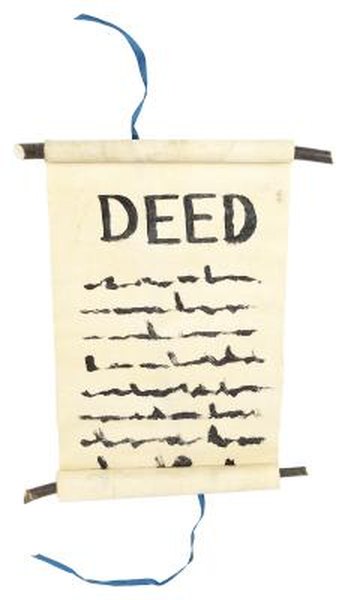How to Transfer Real Estate to a Revocable Trust in New York State
Transferring real estate to a revocable trust in New York State can yield benefits.
Hemera Technologies/PhotoObjects.net/Getty Images
In New York State, transferring real estate property to a revocable living trust enables your beneficiaries to receive assets without subjecting your last will and testament to probate. When you're still alive, you may use, change or withdraw terms set out in the revocable trust at your discretion. However, after death, the trust changes to an irrevocable trust to disperse assets according to your final wishes. During your lifetime, you're responsible for funding the trust, so you must assign or transfer title of real estate deeds to state that the property is a part of the trust.
Create a revocable trust with the assistance of an estate-planning attorney in New York. The benefit of using an estate-planning attorney, rather than doing it alone, helps ensure the trust is funded properly and that properties are properly transferred to the trust. The trust must be signed by the trustee and witnessed by a notary public to become a legal revocable trust.
Step 2Complete Internal Revenue Service Form SS-4 to acquire a tax identification number (TIN) for the trust if you're required to report the trust as fiduciary income. The IRS will assign a unique TIN to the trust, depending on how you set up the trust.
Step 3Obtain warranty deed transfer forms from the county land use or land recording office where your property is located, as well as the real property transfer form from the New York Department of Taxation and Finance. If you’re working with an estate-planning attorney, she will obtain and file these documents for you.
Step 4Contact your mortgage lender to obtain the lender’s consent to transfer the real estate title to a trust. When you transfer real estate to a revocable trust in New York, you'll continue to make mortgage payments to satisfy the loan and can deduct property taxes from your tax obligation.
Step 5Fill out the deed transfer form, ensuring that the title includes the name of the revocable trust for a proper transfer. Include your full legal name as the trustee of the property being transferred.
Step 6Submit the deed transfer forms with copies of your signed revocable trust, mortgage lender’s consent documentation and filing fees with the county recorder's office in New York state, unless your estate planning attorney does this for you.
References
Resources
Writer Bio
Tina Boyle has been writing since 2000. Trained as a journalist, she has traveled to over 150 US cities. She specializes in travel, culture, pets, business and social networking and regularly publishes in newspapers, magazines and on Web sites. She received a Bachelor of Arts in writing from the College of Santa Fe.

